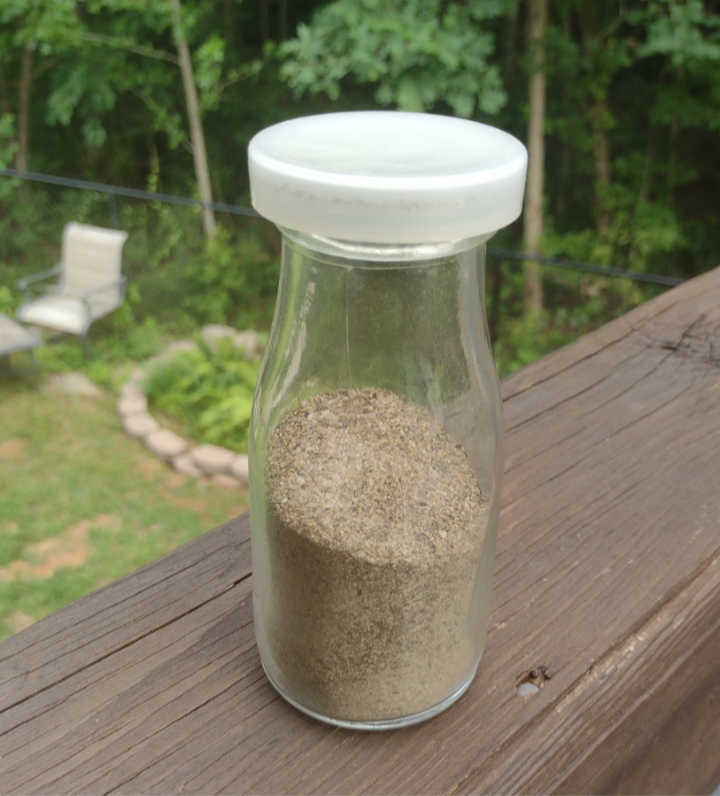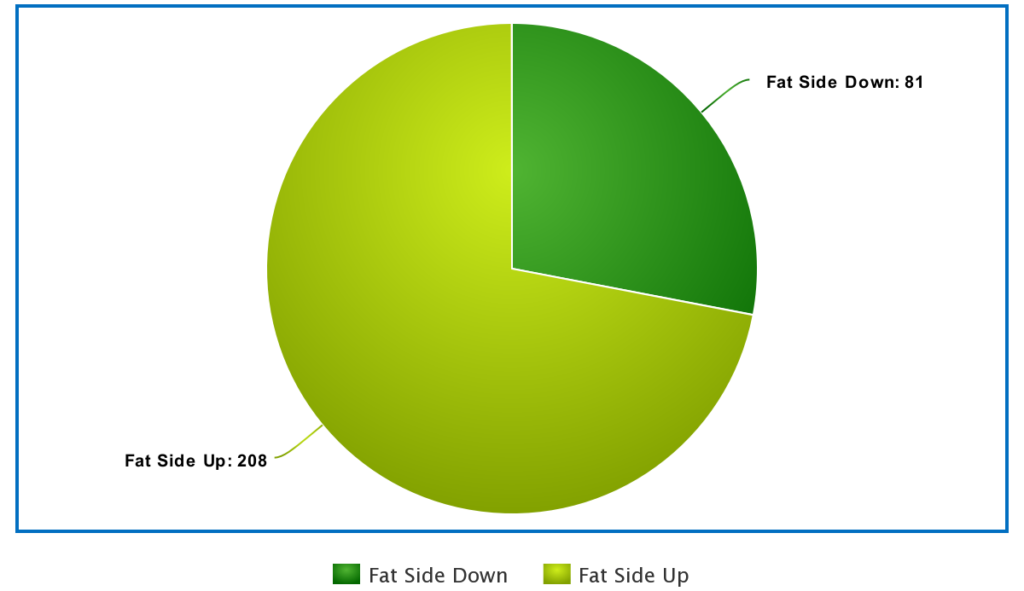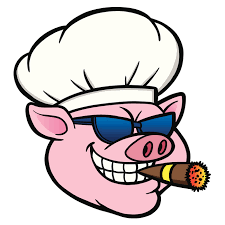Learn how to smoke a beef brisket

First off, No Fear. There is no reason to worry or be intimidated. If you have smoked BBQ before, this really is similar to everything you’ve done previously. I personally smoke mine on a Kamado Joe using charcoal and wood chunks, but this method applies to any set up. So let’s get started.
Like all barbecue, this cut of meat is no different. Season, smoke, and maintain temperature.

Step 1:
When you first get your cut of meat (usually around 10 lbs.), be sure to trim the fat cap. This is a layer of fat on one side of the brisket. Be sure to cut off any excessive fat so there is not more than (1/4) inch thickness. Fat adds flavor, but too much makes your end product… fatty.
Once you have trimmed it up, coat it completely in a rub across the entire surface: top, bottom and sides.
Brisket Rub Recipe
While I like to use all sorts of complex seasoning for my BBQ, I personally have found that brisket is an exception. While I have tried making rubs with chili powder, paprika, cumin, etc. I have found that the brisket stands well on it’s own. It has brought me around to being a purist of salt and pepper. A somewhat even mixture of both.
- 1/2 Cup of Salt (table, course, sea, kosher or what have you)
- 1/3 Cup of Black Pepper (table or ground)
Now a lot of people like to use a binder on their meats. This is not my particular preference. I want less in the way of the smoke penetrating the muscle and I find the moisture of the meat to be more than sufficient to have the seasoning adhere to the brisket.
If you feel like it is too much and plan on making brisket often, get yourself a container like this and keep it sealed. You can always add more and save. Be generous in using the rub because some salt will get absorbed into the beef and a good percentage will fall of while you are handling the cut and managing it on the smoker. I personally like a crust of rub but some people prefer to add a light amount. This comes down to your personal preference.


Step 2:
If you are smoking this brisket (and I assume you are), then you are using an indirect heat method. Now it is time to get your heat going. When you have gotten the smoer between 225° – 250°, add your chunks of hickory, or pellets, chips or whatever you use.
I prefer hickory because I find it to be the best match for beef. You can go with what you like, I am just sharing my recipe here. This is about how to smoke, but you can try any combination you’d like.

Step 3:
The consensus in the BBQ community on fat side up or down does not take specific grills into account. My recomendation is the direction of the heat… so on a Kamado, I recommend fat side down.
Now it is as simple as laying it down on the grates, closing the lid and maintaining the heat of the smoker to between 225° and 250°.
Some people maintain smoke for the entirety of the cook, but realistically it stops absorbing the smoke after about two to three hours. So around three hours in I like to wrap the brisket in butcher paper to help keep moisture in the meat because it is going to be a long cook. Some people use aluminum foil, so this is up to you. Others do not wrap it at all.
Putting the Brisket on the Kamado
How long does it take?
It is not a good idea to commit to a time your cook. If you go onto BBQ groups, you will always get the same answer.
“It’s Done, When It’s Done”
This is very true. As a rule of thumb, you want to try and guess anywhere from 8 to 15 hours. It takes a long time for that connective tissue to finally release. After you have done them a number of times, you will get to know your smoker better and can better estimate in the future.
The Stall
One more thing to keep in mind is The Stall. Sometimes when you get in the 160° range, you will find that your temperature stops going up. This may happen for an hour or more, but eventually it gets past this. This is where most people panic so now you don’t need to.

Step 4:
What is the ideal internal temperature for a smoked brisket?
The best target temperature for brisket is between 195° and 203°. Some people do not go by temp, but you will need a probe of some sort. It should slip into the meat almost as if it weren’t there. You will get to know the difference between checking 2 hours into the cook, to near the end.
At this point the low and slow process has released the toughness in the muscle and you have a tender smoked brisket.
So here is the the final secret. Keep an empty cooler handy and a towel to wrap the brisket in. Once you take it of, wrap it up, place it in and close the lid. We want it to rest so it continues to get tender and the moisture evenly spreads back throughout the entire cut of meat. This can be for as little as half an hour or as long as three.
This is how you get good at managing that uncertainty of how long it takes to cook this BBQ delicacy.
If you want to learn more about food temperature safety for meat, check out the USDA.
The Big Debate: Do You Smoke a Brisket With the Fat Side Up or Down?
If you are new to smoking barbecue, eventually you are going to try one of the most delicious and tender cuts ever to go on a smoker, the brisket. This can be a pricier piece of meat so of course caution is always on a person’s mind to do it right, especially since it can also be one of the longest investments of time. For whatever reason this question is brought up almost every day.
When trimming this cut, you will find a cap that runs almost the entire length of one side. After sculpting the piece of meat, most people opt to keep a healthy portion of fat for additional flavor. Considering it is an overall very flat cut of meat, anyone new to smoking barbecue looks at this juicy piece of meat and has to question themselves as to whether it is better to cook it facing up or down.
The short answer:
Face the fat side toward the direction of the heat. Since the heat from a Kamado is directly below and transmits through the deflector plate, the answer is brisket fat side down.
This being said, the best answer will always be revealed from testing and experimenting.. But let’s see what other have actually done and try to learn from their experience.
Let’s Ask Those That Barbecue
You are going to run into a lot of opinions online. Blogs, forums, videos, etc. I myself gain a lot of insight from a readily available online community. I find the Facebook Groups to be more welcoming and quick to respond than any other place you will find. Now mind you, this topic draws a lot of laughter because it is asked so often. But I decided to put together a very direct post to get quality feedback and utilized a poll as well.

So what did thee BBQ members have to say?
“Fat side up bastes the meat while it cooks. Cook ham in the oven the same way”
Dorothy Butler
“Fat side down to protect the meat from the heat, allow for more bark on the rest of the meat and because fat doesn’t render back into the meat like everyone thinks.”
Gregory Schweier
“Trim the fat. What’s left goes down”
Mike Jamison
“I learned the Franklin bbq way which is fat up, so it renders on top of the meat as it’s smoked.”
Nick Andrews
As you can see, we got a mixed bag of answers. Apparently, it can also make a difference on what kind of smoker you are using as well.
“All depends on where your fire comes from. Fat towards fire”
Chip Nevins
“it all depends on the cooker. Since I use a drum with the flame directly under the meat, fat side down. If I’m using a side firebox, reverse flow or cabinet smoker, then fat side up.”
George Przybylski Jr.
I thought using the poll results to assist in making the decision would be useful as well. This is feedback from 5 Facebook groups of different sizes. Some are more easy going, others very serious. We had some additional “other” answers including: Depends, Towards the Heat Source, Fat to the Fire and others. By a clear majority, the members voted Fat Side Up.
- UP – 208
- DOWN – 81
- OTHER – 35

I have chosen not to include category: other just to get a clear analysis. It was nearly 72% voted Fat Side Up


Other Sources : Facebook Groups – North Carolina Barbecue Society Smoking BBQ ! NO PANSIES!! BBQ – Smokers – Grilling – Techniques – Recipes
So What is the Answer?
From my experience and feedback from everyone over the years, you weigh two options. Lots of people say that if you have a heat source directly on the meat, it would be wise to keep the fat in between the heat and the muscle.
This really depends on the type of smoker you use as the heat can be from completely different directions in each. So in a porcelain style, like a Kamado Joe or Green Egg, the heat comes from below, so Fat Side Down.
The best way to find out is trying both ways on different cooks. You will get a lot of opinions but ultimately you will learn on your own and have a barbecue style that is ultimately yours.
If you are ready to put one on your smoker, here are some tips on how to cook a juicy and flavorful brisket on your Kamado Joe.
